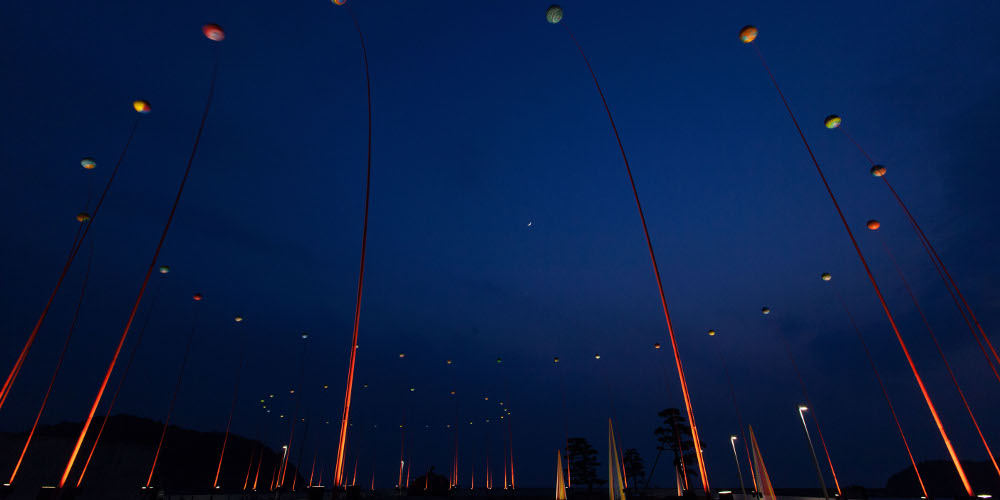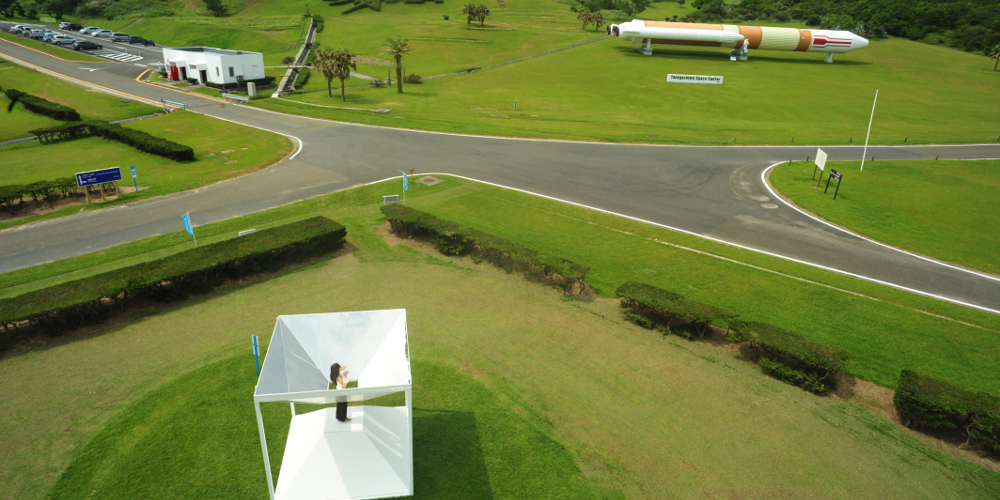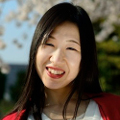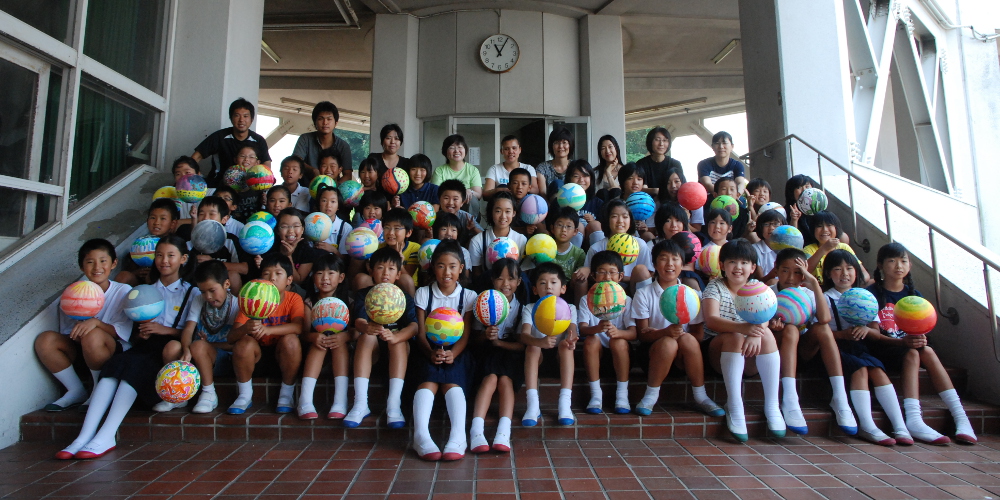Yuri Tanaka is currently a researcher in residence at the Ars Electronica Futurelab. During her residency she is working at her PhD thesis on cosmic art and exploring what is going on in cosmic art involving new media, and working for the Ars Electronica Festival in coming September about the space science topic as a part of the exhibition. On 11th June 2015 Yuri will give a talk at the Ars Electronica Center.
Yuri, you are a researcher and curator in cosmic art from Tokyo University of the Arts. So what is your background?
Yuri Tanaka: After I graduated from the University of Tokyo, where I got my master’s degree in Interdisciplinary Information Studies, I started with exploratory research on what is called space or cosmic art. I moved to Naoshima, a small isolated island with about 3,000 inhabitants on 8.13km². As it’s an archipelago, you can find 727 islands surrounded by the Seto Inland Sea, where the nature and people live together in harmony. There I started to work at the art museum in a curatorial team. Furthermore, we hold the international art festival called “Art Setouchi” every three years. This started in 2010, right when I came to the island and started an art project on cosmic art, in practice.

Setouchi (Credit: Yuri Tanaka)
What is fascinating you on cosmic art?
Yuri Tanaka: I’m always looking for an approach to answer the question: how cosmic art could be expressed in real life and culture? Thus, I’m not only looking for new artworks in the field and creating art on my own, but I’m extremely interested in possibilities for local collaborative method to make art together with local people in a natural environment.
Cosmos and art are deeply linked to human beings and based within their nature; they are not far away from you, but in most cases you don’t realize this fact. I like to think of them as the concealing beauty inside of you. Believing that every single change comes from within your mind, I found my mission as a curator is to connect cosmos, art, and people in everyday life, to transform our way of living from a cosmic point of view through the creation of cosmic art projects by intuitive communication with local people.
That sounds exciting. So how are you designing these projects? How does the interaction with the local community look like?
Yuri Tanaka: Everything starts from a dialogue. A dialogue with an artist, a designer, a scholar, a school teacher, a local administration, and most importantly, with local residents in the island. We share the idea and then make a plan for the expected site, searching for a possibility to be transformed in a site specific way. In my case, making artworks together not only with artists but also with local people in the public spaces like parks, or in the vacant houses. Calling for volunteers, we sometimes have more than several hundreds willing to work together. It creates a sense of unity in a community. From what I’ve experienced in the island, it was really heartwarming when I got these words from local people: “I had no idea about cosmos or art for the first time but a lot of imagination were flourished when I began to move my hand”, and “Somehow, I come to feel that cosmos is something beside me”.

Moons of Naoshima (Naoshima, Japan, 2013) Credit: Takaharu Ito
What is the difference between space art and cosmic art? Could you give a general introduction and some examples?
Yuri Tanaka: Space art in general refers to recent artworks, which are inspired by cosmology, or space science and space technology. For instance, back to the origin in ancient ages like Egyptian Pyramids or Stonehenge, the idea of cosmology has widely taken into account in expression as a formative object. Whereas “space art” was first defined by Roger Malina at the International Astronautical Federation (IAF) within the context of space development in 1989. Within this arena, an outer space related art is sometimes called “astro-art” or “zero-gravity art”. Furthermore, there was also a declaration of “cosmic art” in “The Dimensionist Manifesto” in 1936 as a manifestation to propose form of art in a holistic space, beyond four-dimensional space.
However, the difference between “space art” and “cosmic art” still remains in ambiguity since its philosophy and thought haven’t been deeply discussed, yet. Within our work on space and cosmic art we aim to develop a new idea of art and navigate into a future direction of this kind of art.
Besides the loose theoretical framework, there have been a lot of excellent artworks within this field. Instead of talking about masterpieces in the history of cosmic art, I want to name artists I work about in my research project: Arthur Woods, Charles Ross, Dan Goods, Ioannis Michaloudis, Isamu Noguchi, Otto Piene, Richard Clar, Tim Otto Roth.
Furthermore, there have been some pioneering approaches to create an idea beyond the earth we are living on and to broaden it to the cosmos in a multidisciplinary way. If you think of cosmos, it will be beyond your imagination, and that makes cosmic art challengingly creative. Cosmic art, which I’m trying to pursue, is an art of life, holding a comprehensive idea of art and science as a part of our lives, which links to every essence of the universe.
What is your focus on cosmic art and what is your PhD study about?
Yuri Tanaka: My next step will be to reconstruct a philosophy of cosmic art, and further to apply it to an art practice in my Ph.D. It’s a circulation of theory and practice. For the philosophical background, I’ve been researching about the discourse on the idea of cosmos, life and art, searching for how these essences are related from the perspective on life. My work is mainly influenced by Ludwig Klages, a German philosopher who worked with the idea of Johann Wolfgang von Goethe’s morphology, and Shigeo Miki, a scholar who used Klages’s theory to develop a theory of life and to anatomy, which was very influential within the field of aesthetics anatomy in Japan.
Applying those ideas into practice, I’ve been conducting art projects in collaboration with artists, designers, technologists, scientists, and local people. For instance, one of our sites is on Tanegashima, an isolated island in the south of Japan, where the Japan Aerospace Exploration Agency (JAXA) set a rocket range in 1969. By utilizing a local collaboration method, we are now preparing to hold a cosmic art festival, which could continuously grow in the local culture. Also, we are seeking to open up a new era from a very local place like Tanegashima. I would rather say it is the idea: “think cosmically, act locally”.
 Uy-uni-verse≒Multiverse (Tanegashima Space Center, Japan, 2014) Credit: Cosmic Art Research Committee
Uy-uni-verse≒Multiverse (Tanegashima Space Center, Japan, 2014) Credit: Cosmic Art Research Committee
One short last question: What can we expect to hear on June 11th during your talk at the museum?
Yuri Tanaka: It’ll be an introductory talk on cosmic art. Thinking to present a series of cosmic art pieces with some photos or movies. Hoping it will be an opportunity for anyone to take a glance at what the idea of cosmic art is all about and to have a new perspective in their lives.

Yuri Tanaka, received a BA from University of Tsukuba, took a year exchange in University of California, Berkeley during her undergrad. After she received her MA from the University of Tokyo, she explored curatorial work in the museum and in public space in Naoshima. Currently, she is a Ph.D. candidate at Tokyo University of the Arts, and an independent curator within her research theme on cosmic art. Furthermore, she is one of the founders and chief of Cosmic Art Research Committee at the Institute of Environmental Art and Design since 2014.
For more information: On June, 11th Yuri Tanka has a talk on the topic Cosmic Art at the Ars Electronica Center: https://ars.electronica.art/center/fl-cosmicart/
